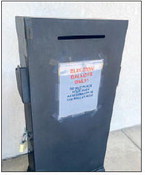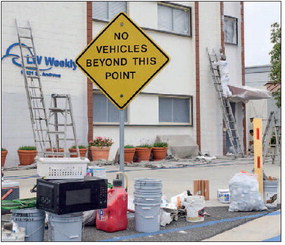E-Bike Safety
An electric bicycle also known as an e-bike is a bicycle with an integrated electric motor that can be used for propulsion. Many kinds of e-bikes are available worldwide, from e-bikes that only have a small motor to assist the rider’s pedal-power (i.e. pedelecs) to more powerful e-bikes that are closer to mopeds. All retain the ability to be pedaled by the rider and are therefore not electric motorcycles.
E-bikes use rechargeable batteries and the lighter ones can travel 16-20 mph, depending on local laws, while the more high-powered models can reach speeds of 28 mph.
According to a 2018 bicycle industry analysis, e-bikes sales increased 83 percent between May of 2017 and May of 2018, and e-bikes made up 10 percent of overall bikes sales in the U.S. for that time period.
The California DMV defines the e-bike as a bicycle equipped with fully operable pedals and an electric motor of less than 750 watts. Three classes of electric bicycles have been established:
• Class 1: A low speed pedal-assisted electric bicycle equipped with a motor that provides assistance only when the rider is pedaling and ceases to provide assistance when a speed of 20 mph is reached.
• Class 2: A low speed throttle-assisted electric bicycle equipped with a motor used exclusively to propel the bicycle and not capable of providing assistance when a speed of 20 mph is reached.
• Class 3: A low-speed, pedal-assisted electric bicycle equipped with a speedometer and a motor that provides assistance only when the rider is pedaling and ceases to provide assistance when a speed of 28 mph is reached.
The operator of a Class 3 electric bicycle:
• Must be 16 years old or older.
• Must wear a bicycle safety helmet.
• Must not transport passengers.
• May ride an electric bicycle in a bicycle lane if authorized by local authority or ordinance. They are allowed in Leisure World.
All electric bicycle classes are exempt from the motor vehicle financial responsibility, DL, and license plate requirements.
E-bike Safety Electric bikes are more popular than ever, with older riders—Baby Boomers, especially—driving much of the demand. Proponents have touted e-bikes as a way to make cycling more accessible to the elderly, people with disabilities, and anyone who might hesitate to hop on a conventional bike.
Yet as this new technology spreads, so has a new crop of safety concerns, according to a study of e-bikes published in December in “Injury Prevention” from researchers at New York University’s School of Medicine. The study looked at a national database of emergency room visits for information about accidents related to riding a standard bicycle, motorized scooter or an e-bike from 2000-2017.
It found that more than nine million men, women and children showed up in an emergency room after being hurt while riding a standard bike during those 17 years. Another 140,000 injured themselves on scooters, and about 3,000 on e-bikes, and in general, the e-bike injuries were the most severe and likely to require hospitalization.
Why e-bikers tended to hurt themselves more seriously than other riders is not clear from the injury data, but e-bikes can go faster and increased speed often results in more-severe injuries, experts say.
E-bike injuries were also more than three times as likely to involve a collision with a pedestrian than either scooter or traditional bike injuries, according to the “Injury Prevention” report.
In California, E-bikes are regulated like bicycles. The same rules of the road apply to both e-bikes and human-powered bicycles, so the same safety rules apply: Go slow if necessary, yield to pedestrians and check cross streets and driveways.
Electric bicycles are designed to be as safe as traditional bicycles, do not compromise consumer safety, and benefit bicyclists who may be discouraged from riding a traditional bicycle due to limited physical fitness, age, disability or convenience. But their potential for speed requires following the rules of the road and heightened awareness of surroundings, for example, pedestrians and people emerging from parked cars.





